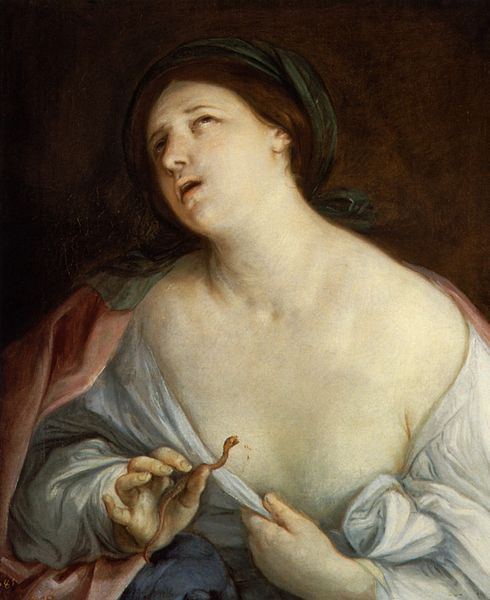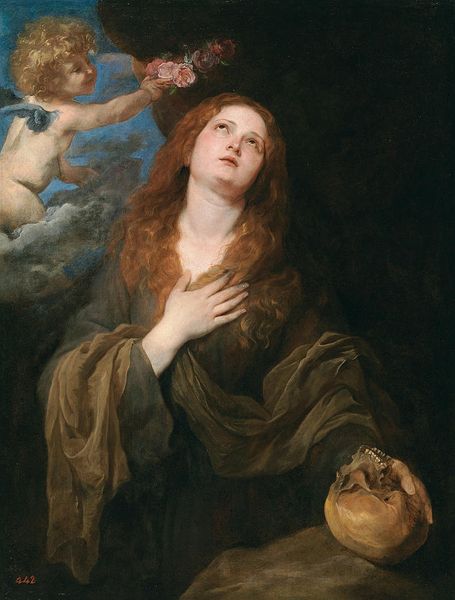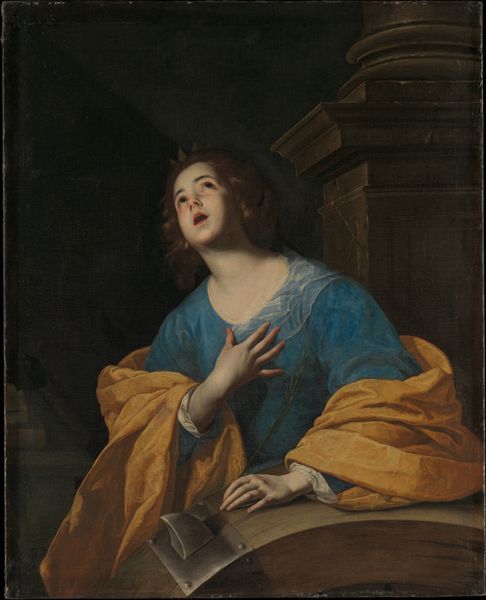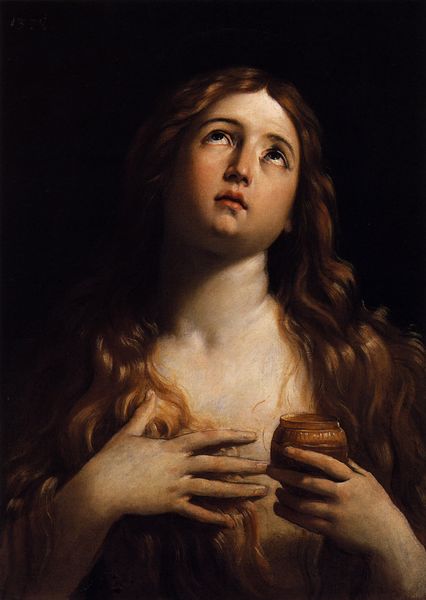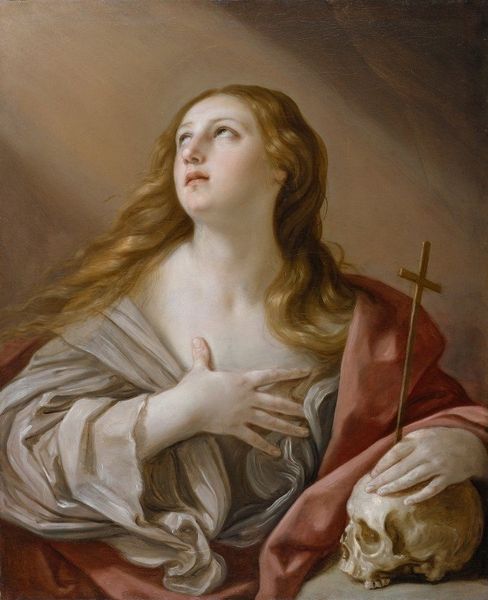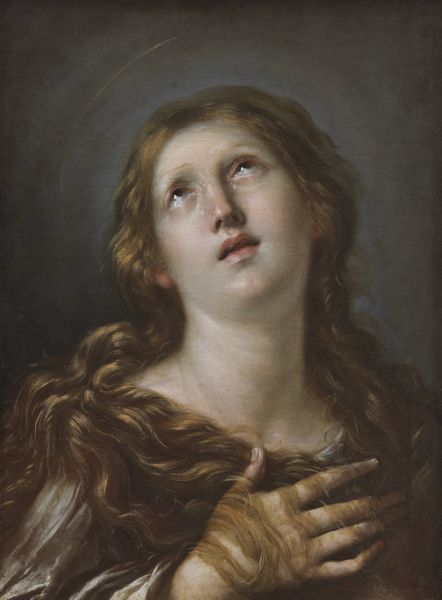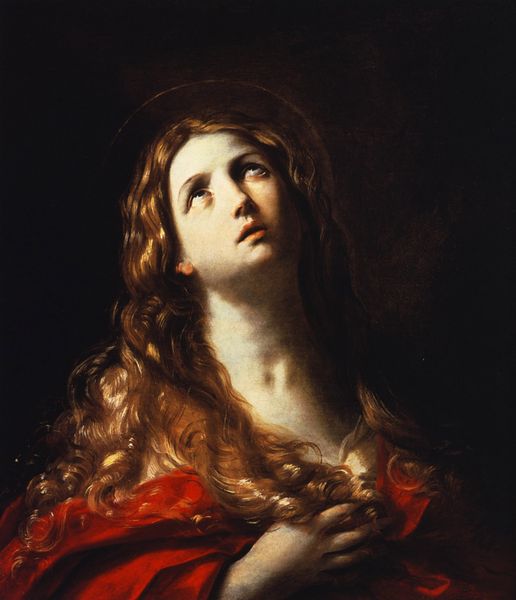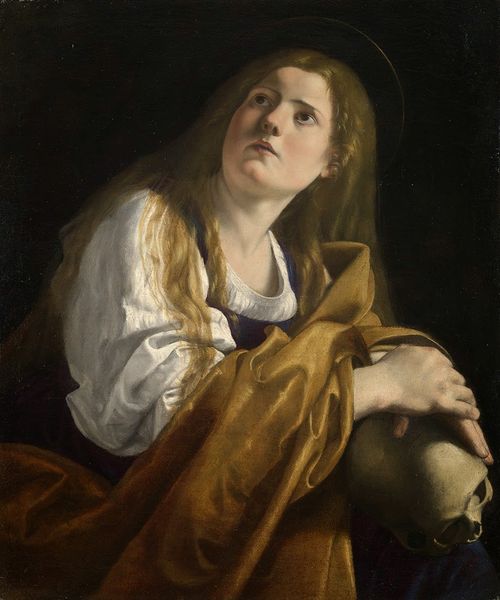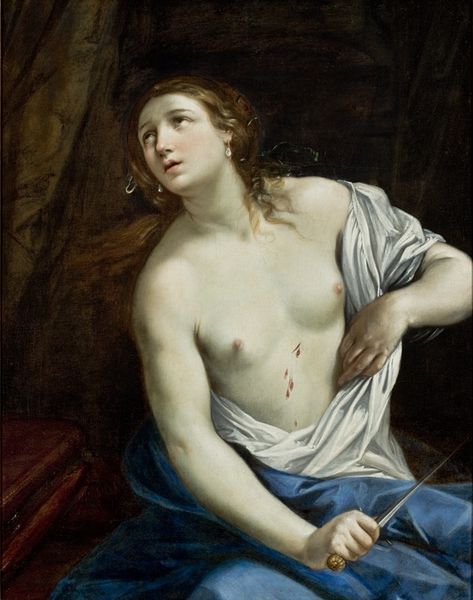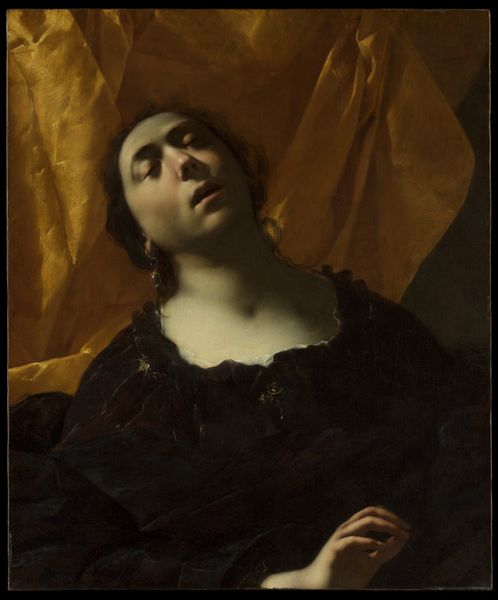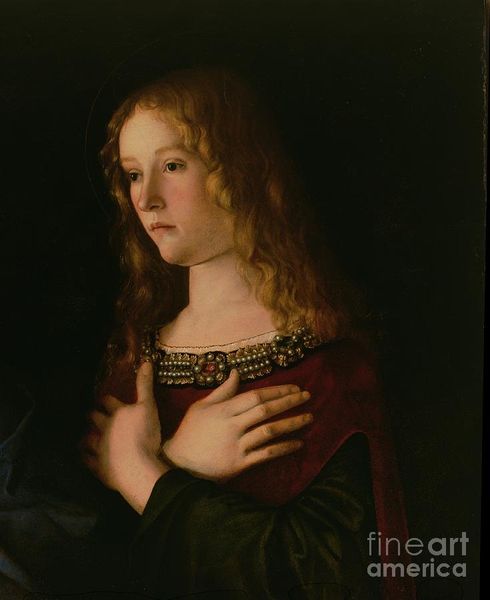
oil-paint
#
portrait
#
allegory
#
baroque
#
oil-paint
#
history-painting
#
nude
Dimensions: 37 3/8 × 29 1/2 in. (95 × 75 cm)
Copyright: Public Domain
Guido Cagnacci painted ‘The Death of Cleopatra’ around 1660, using oil on canvas. This compelling image captures the moment when Cleopatra, the last queen of Egypt, chooses death over the humiliation of defeat by Roman forces. Paintings like this were often commissioned by wealthy patrons, reinforcing social hierarchies by depicting classical stories in a way that emphasized drama and morality. Cagnacci, however, subverts this tradition by focusing on Cleopatra’s sensuality. The revealing dress, the upward gaze, and the snake itself create an erotic charge, almost as if it’s a scene from a dream. This was painted in Italy during the Baroque era, when artists were influenced by the Catholic Church and other patrons to create art that would inspire faith, or, in secular cases, reinforce the patron’s status and power. By injecting this image with an intense but conflicted sexuality, Cagnacci seems to question that power. To fully appreciate this painting, we might look at the social and economic structures that allowed such art to be produced, questioning its implicit assumptions and challenging its explicit message.
Comments
No comments
Be the first to comment and join the conversation on the ultimate creative platform.
